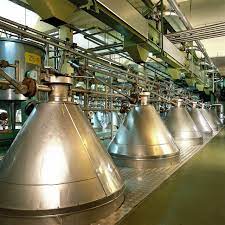Manufacturing efficiency is a vital component to success in any business. As manufacturers strive to optimize their output, they are constantly looking for new ways to increase efficiency, reduce costs and improve quality. From harnessing technology and automating processes to streamlining production blueprints, there are a variety of strategies available that can help manufacturers achieve maximum efficiency.
In this article, we will explore the various tips and tricks available for optimizing manufacturing operations and discuss how these strategies can be implemented in your production process.
Harnessing Technology for Your Manufacturing Needs
Technology plays a larger role in the manufacturing process, helping streamline operations, increase efficiency, and reduce costs. From computer-aided design (CAD) software that speeds up product development time to automated robotic systems that take over mundane tasks, manufacturers are taking advantage of the latest technological advances to optimize their processes.
Computer-aided design (CAD) is a popular choice among injection molding companies. This software allows designers to create 3D models and simulations of products, streamlining the design process and reducing the probability of errors. Automated robots are also being used more frequently in the manufacturing process, taking on mundane tasks such as loading components into machines or performing quality checks.
The Benefits of Automated Processes
Automating processes can help to improve efficiency, reduce costs and increase quality. Automated systems are more accurate than manual labor and can complete tasks faster, reducing product development time. Additionally, automated processes are not subject to human error or fatigue, ensuring that products meet quality standards every time.
10 Steps to Streamline Your Manufacturing Blueprint
Having a streamlined manufacturing blueprint is key to optimizing efficiency and ensuring success. Here are 10 steps you can take to streamline your production process:
- Establish clear goals for each stage of the process.
- Analyze current processes to identify areas that need improvement.
- Utilize technology, such as CAD software, to speed up product development time.
- Automate mundane tasks to reduce labor costs and free up resources.
- Create a timeline of milestones and deadlines for each stage of the process.
- Implement standardized processes to reduce the risk of errors.
- Invest in quality control systems to consistently meet product quality.
- Track production data to identify bottlenecks and improve efficiency.
- Consider outsourcing specific tasks to reduce costs and free up resources.
- Take advantage of feedback from customers and employees to continuously refine processes.
By following these 10 steps, you can create a streamlined manufacturing blueprint that will help optimize your production process and ensure success in the future.
Optimizing Output with Lean Principles and Six Sigma Methodology
In addition to the above tips and techniques, manufacturers can also take advantage of lean principles and Six Sigma methodology to further optimize their output. Lean manufacturing is a process that focuses on reducing waste to increase efficiency. By eliminating non-value-added steps and activities from the production process, manufacturers can streamline operations and reduce costs.
Six Sigma methodology is another strategy used to optimize efficiency. This system focuses on quality control, reducing defects and errors in the production process. By taking advantage of these methods, manufacturers can ensure that their products meet customer expectations every time.
Implementing Quality Control Systems in the Workplace
Finally, it is important to implement quality control systems in the workplace to ensure that products meet customer expectations. Quality control systems can help identify problems early on in the production process and reduce the risk of errors or defects. Additionally, these systems can help streamline operations by reducing time spent on rework and ensuring that products are ready for shipment promptly.
Conclusion
Now that you have a better understanding of how to optimize efficiency in the manufacturing process, it’s time to start putting these strategies into practice. By taking advantage of technology and harnessing modern techniques such as Lean principles and Six Sigma methodology, manufacturers can reduce costs, improve quality and ensure success in their production operations.








